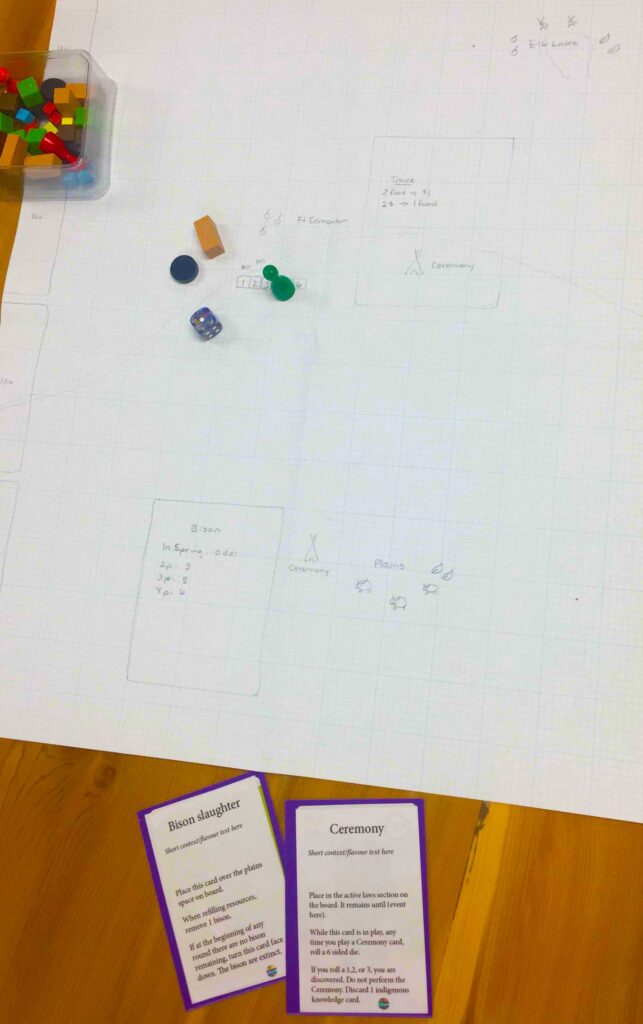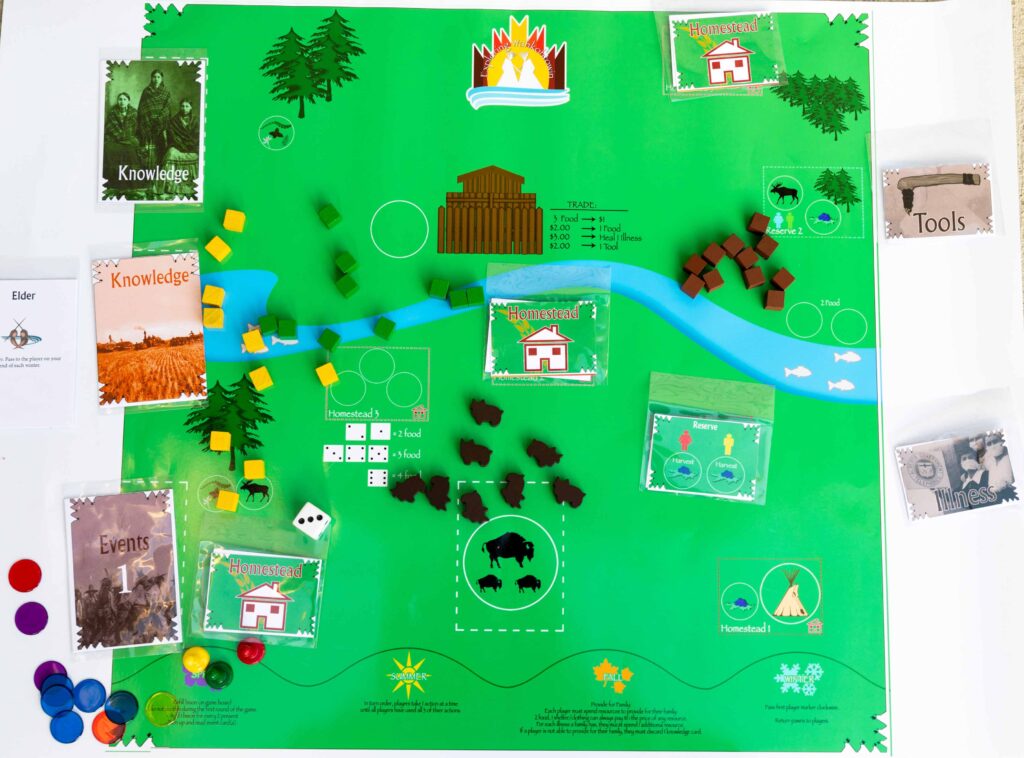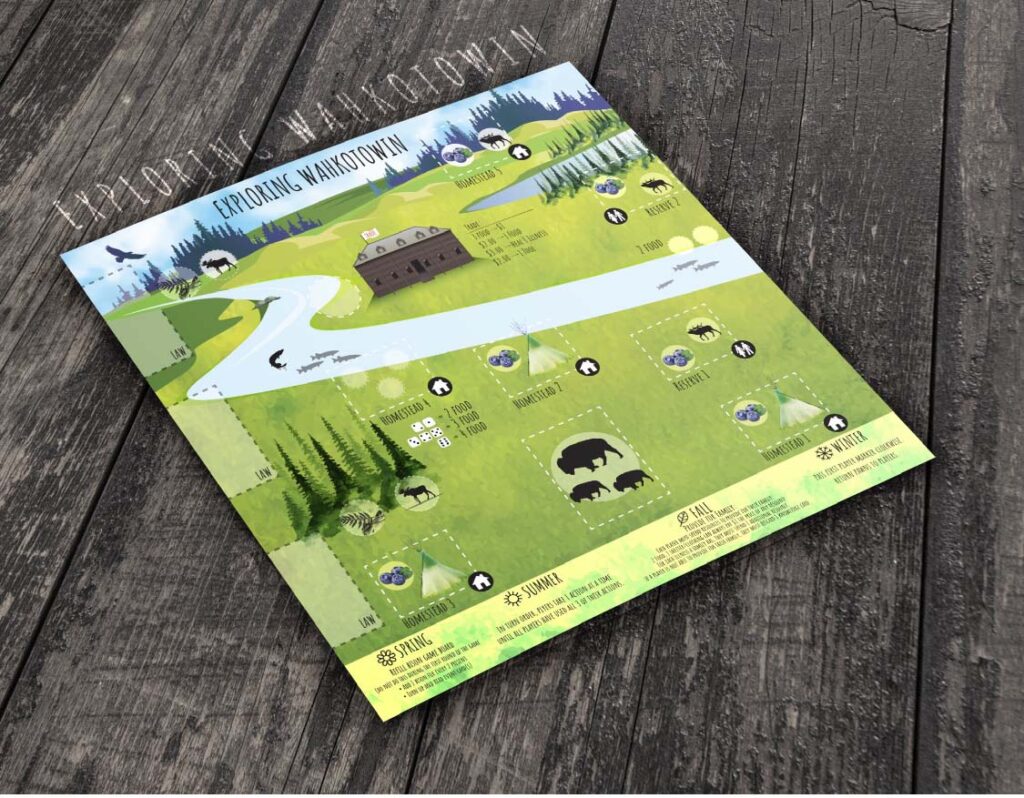The Game
By Roberta Taylor, Game Designer
I came to this project with a lot of excitement, but also a lot of uncertainty. To be entrusted to help tell such an important and impactful story, a story that is absolutely not mine, was a huge honour and responsibility. We began the project with a series of meetings with our team, which included an elder and some amazing scholars. We talked about what games could do, and what specifically they envisioned this game accomplishing. I was grateful to be able to spend this time listening to the stories and insights that were shared, and I came away with a better understanding not only of the history of Treaty 6, but also of the Indigenous way of being.



I used this insight and my understanding of game design to begin building a framework to tell a story with our game. When we bring players to the table and have them take on any role, they must to some degree embody that character, they must put themselves in someone else’s shoes. And so, when we invite players to take the role of an Indigenous family in our game, we have a unique opportunity to engage with those players and help them develop a deeper understanding of what many Indigenous families have experienced over the past 150 years. While I developed that framework, I leaned heavily on our team to choose which historical events we would include, as time constraints necessarily meant that we could not include everything.

